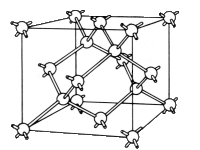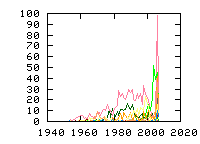« Previous
1
Next »
(3 hits, 1/1)
Showing
10, 25, 50, 100, 500, 1000, all papers per page.
Sort by:
last publication date,
older publication date,
last update date.
- 1. Appl. Phys. Lett. 89, 092103 (2006) , “Electron energy barriers at interfaces of GaAs(100) with LaAlO3 and Gd2O3”, V. V. Afanas'ev, A. Stesmans, R. Droopad, M.Passlack, L.F. Edge, D. G. SchlomElectron energy barriers at the interfaces of GaAs(100) with Gd2O3 appear to be insensitive to the Fermi level pinning indicating that charges at interface states are of marginal importance for the band alignment at semiconductor/insulator interfaces. The inferred conduction... (Read more)
- 2. Phys. Rev. B 74, 214105 (2006) , “Atomistic simulations of radiation-induced defect formation in spinels: MgAl2O4, MgGa2O4, and MgIn2O4”, D. Bacorisen, Roger Smith, B. P. Uberuaga, K. E. Sickafus, J. A. Ball, and R. W. GrimesMolecular dynamics simulations of collision cascades were performed in three spinel oxides with varying inversion, namely normal magnesium aluminate, MgAl2O4, half-inverse magnesium gallate, MgGa2O4, and inverse magnesium indate,... (Read more)
- 3. J. Cryst. Growth 264, 1-6 (2004) , “Ammonolysis of Ga2O3 and its application to the sublimation source for the growth of GaN film”, Y. J. Park , C. S. Oh , T. H. Yeom, Y. M. YuWe have observed the nagnetic resonance of conduction electrons in n-type indium antimonide, by the "heating" of the electron kinetic-energy temperature via the slsctron spins. This is the first direct evidence suggesting a contribution of spin-orbit coupling to relaxation in this system. In a steady-state spin-resonance experiment, a power PS=(M0=MZ)H/T1 is transferred to the systems(reservoirs) towards which the spins relax. Here, M0 is the equilibrium magnetization, MZ the component of the magnetization along the magnetic field H, and T1 the relaxation time. The reservoir of interest in our case is the kinetic energy of the eledtrons, and this is detected by an increase in the mobility μ. To our knowledge. this is the first observation of the power flow, due to relaxation, from the spins to a reservoir,applied to the ditection of magnetic resonance of conduction-electron spins. It differs in principle from usual spin-resonance observation methods, which are based on electromagnetic interactions of the spin system, such as the voltage induced in a resonator by the rotating magnetic moment, or again such as power absorption PS=MyHx from the rotating field Hx by the out-of- phase component My.Besides providing information on the relaxation mechanism, the present method (that we call "ralaxation" method) should also in some cases by much more sensitive than the usual "electromagnetic" detection methods. (Read more)
« Previous
1
Next »
(3 hits, 1/1)
Showing
10, 25, 50, 100, 500, 1000, all papers per page.
Sort by:
last publication date,
older publication date,
last update date.
All papers (3399)
Updated at 2010-07-20 16:50:39
Updated at 2010-07-20 16:50:39
(view as: tree
,
cloud
)
| 1329 | untagged |
Materials
(111 tags)
Others(101 tags)
Technique
(46 tags)
Details
(591 tags)
Bond(35 tags)
Defect(interstitial)(18 tags)
Defect(vacancy)(15 tags)
Defect-type(19 tags)
Element(65 tags)
Energy(8 tags)
Isotope(56 tags)
Label(303 tags)
Sample(17 tags)
Spin(8 tags)
Symmetry(15 tags)

